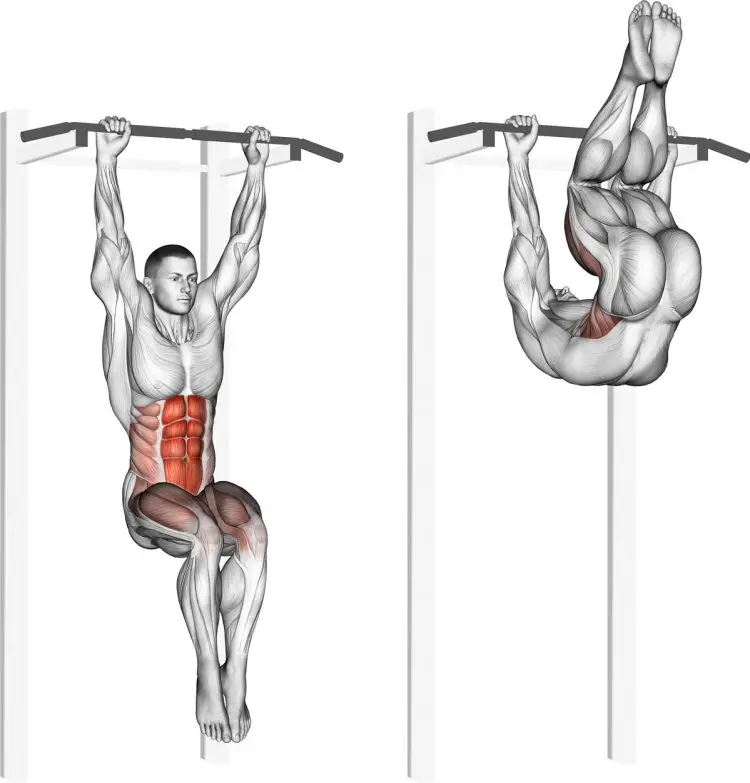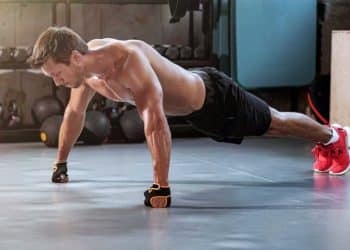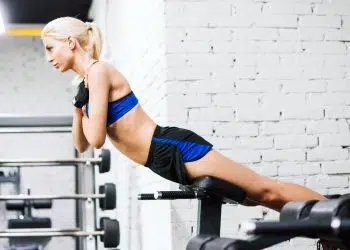The hanging pike is a leg raise variation that works the abdominal muscles and more. It’s similar to the toes-to-bar exercise commonly performed in CrossFit.
The movement requires adequate grip strength, flexibility, and mobility throughout the body and is not a beginner’s exercise.
In this guide, we’ve explained how to do it with tips, variations, and more.
Hanging Pike Muscles Worked
There are several muscles involved in the hanging pike exercise.

Iliopsoas
A major muscle with a big responsibility, iliopsoas is the primary hip flexor an strongest out of the associated muscles of the inner thigh. The psoas major and iliacus make up the iliopsoas muscles and it’s important to know that they can function as one or individually.
Level Up Your Fitness: Join our 💪 strong community in Fitness Volt Newsletter. Get daily inspiration, expert-backed workouts, nutrition tips, the latest in strength sports, and the support you need to reach your goals. Subscribe for free!
Rectus Abdominis
Leg lift variations are some of the best for training the abdominal muscles. Rectus abdominis are the superficial core muscles that form a lumpy yet aesthetic appearance known as a six pack. The abs can curl the torso from the top and bottom (e.g., lifting the legs).
Obliques
Oblique muscles are an important component of a well rounded core. While mostly a rotational trunk muscle, obliques get their work during most ab training movements.
Quadriceps
While you won’t build massive quads doing leg lifts, the quadriceps technically flex the hips so they will be involved to a degree.
How To Do The Hanging Pike
- Grab the pull-up bar using an overhand, slightly wider than shoulder-width grip. Don’t allow your head to sink down into your shoulders.
- With your feet together, tilt your pelvis back a little and bend your knees slightly while engaging your core muscles.
- Raise your legs overhead until your toes are pointed toward the ceiling or touching the bar. Your abdominals should be engaged during this portion of the exercise.
- Slowly reverse the motion and repeat for the desired number of reps.
Here’s a video example…
Hanging pike tips
- Avoid swinging to complete your reps
- Use ankle weights for more of a challenge
- Avoid dropping your legs back down but rather control the negatives.
Hanging Pike Variations
While the hanging pike is a great exercise variation, we like these too.
1. Hanging knee raise
The obvious Elephant in the room is the level of fitness one needs to be able to do the hanging pike. For those who cannot, the hanging or captain’s chair knee raise is a great option.
Rather than lift your toes to the bar, the knees are lifted until the upper legs are parallel to the floor.
You still want to engage the core muscles and ensure that your controlling the movement.
If you want to progress, you could do the leg and hip raise to strengthen the muscles that are necessary for doing the hanging pike or its variations.
Level Up Your Fitness: Join our 💪 strong community in Fitness Volt Newsletter. Get daily inspiration, expert-backed workouts, nutrition tips, the latest in strength sports, and the support you need to reach your goals. Subscribe for free!
Lying variations
Let’s say you don’t have a bar or captain’s chair, well, that’s where lying leg raise variations come in. The lying leg raise or lying leg and hip raise will have a similar effect.
To make the movement even more challenging, use an incline bench to do the leg raise.
Weighted hanging pike
If your up for the challenge, wear some ankle weights to make the exercise more difficult.
It’s probably not a great idea to go real heavy on these but if you get to the point of the bodyweight variation being too easy then it’s a good option to continue progressing.
How To Incorporate The Hanging Pike Into Your Training Routine
The hanging pike is a leg raise variation which means it plays an essential role in a complete core training routine.
Leg raise exercises are generally the most difficult bodyweight variation due to the heavy weight of the legs.
Therefore, it’s ideal to do them first before other movements such as crunches, cable exercises, planks, etc. So in other words, you’re starting from the bottom and moving up to the top where you’ll perform exercise variations that are easier to do.
Sets and reps
Anywhere from 2-3 sets per exercise can be sufficient if you’re training your core muscles frequently throughout the week. As for reps, well, this depends on your experience level as similar bodyweight exercises are not as easy to predetermine due to the fixed resistance (your body weight).
Do what you can as long as you can maintain good form. If you can do 25 without breaking a sweat, you may want to add some weight or choose a more challenging movement.
Washboard Abs: The Ultimate Guide
Wrapping Up
The hanging pike is a core exercise that requires a degree of flexibility, mobility, and total body strength. If you can pull it off, then you’ll have an excellent variation that you can add to your ab training regime.
Exercises that involve hanging from a bar and raising the legs overhead are some of the most challenging and effective by the same token.
We hope this guide was helpful and you don’t have to overthink it, just get to training!
Interested in measuring your progress? Check out our strength standards for Toes To Bar, Hanging Knee Raise, Lying Leg Raise, and more.











